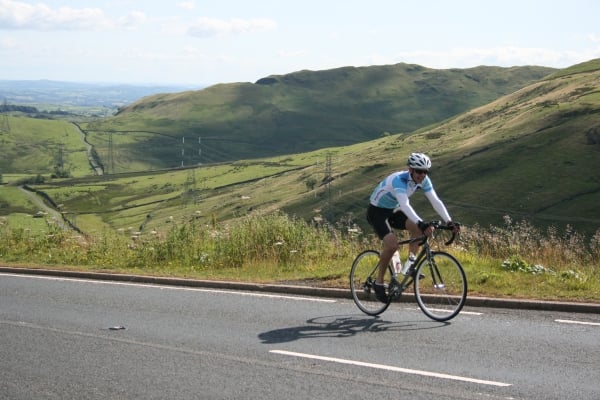Lands End to John O’Groats (or the other way round) is the pinnacle of UK long-distance riding, covering the length of the country and passing through some of the finest scenery in the world. Whilst we can’t do the training for you, we’ve come up with a list of ten tips for those undertaking this incredible journey, based upon the experience of our leaders who’ve put rubber to tarmac countless times along this magnificent route.
1. Don’t underestimate the hills of Cornwall and Devon. If you are cycling south to north, you undoubtedly have the hardest days to begin with. The rolling (sometimes brutal) hills of Cornwall and Devon are an interesting start and it won’t really matter which route you take, you’ll encounter some tough climbs. The plus points of starting in Lands End with the tough stuff is that you have fresh legs and by the time you get to the other main climbs in Scotland, you’ll be used to tackling them.
2. Take plenty of spares. One of the hardest things to decide upon is what to take with you. It is unlikely that you’ll need a replacement bike, but having a good stash of inner tubes (we recommend four as a minimum), a couple of spare spokes, oil, water displacer (or WD40), some degreaser, a dirty rag, chain cleaner and spare brake pads can go a long way. Of course, it’s will be possible to pick supplies up, but this definitely gets harder as you enter the more remote areas of Scotland (if you’re riding as part of a supported team, you may find the following post useful – whilst LEJOG is certainly not a Sportive, the items listed in the post will put you in good stead for what you should carry: http://www.moreadventure.co.uk/cycling-sportives-what-to-take/)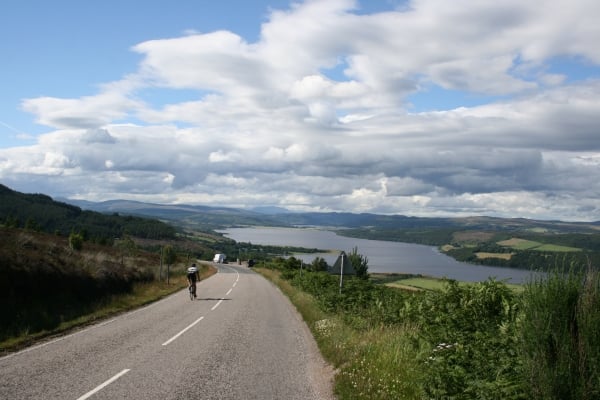
3. Scotland is remote so prepare accordingly. Depending on which route you take once you’re in Scotland, it’s worth noting that there are stretches (which could be full days) that there is very little in the way of services, let alone bike shops. North of Inverness is particularly remote, so ensure you stock up on essentials (bicycle spares, specialist snacks, clothing if needed etc.) here before carrying on in the Northern Highlands.
4. Crossing the border of Scotland is not near the end of LEJOG. We don’t wish to dishearten you here, but Scotland is a huge place so by the time you cross the border from England, you still have a fair way to go. All too often we encounter riders that assume that because they’re now in Scotland, they’re nearing the end. It’s a hell of an achievement in itself to have made it this far, but just don’t stop!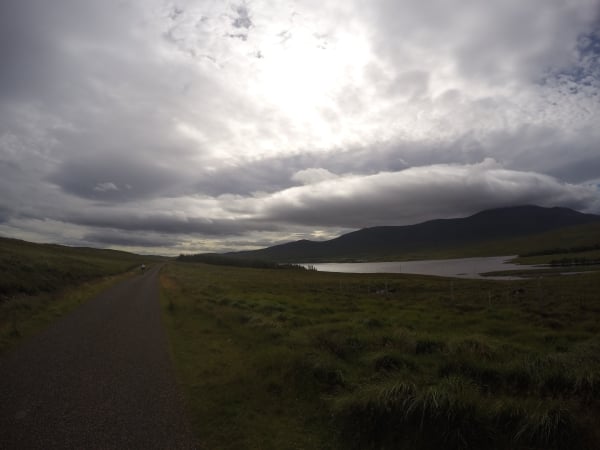
5. You may be charged to be photographed near the Lands End and John O’Groats famous signs. A number of years ago, an enterprising family set up businesses charging to take photos of tourists next to both of the signs. The photos would then be processed and posted to the tourist as a souvenir. Since the advent of digital photography however, less people require this service which has all but killed off the business. We believe that the family has now left John O’Groats and in any case, there’s a perfectly good alternative sign that’s free to photograph!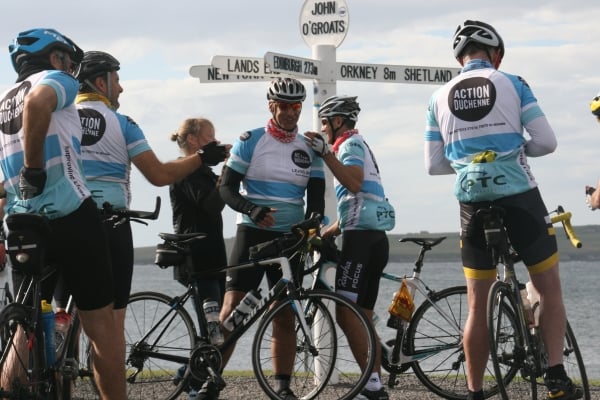
6. Train in all weathers. We’ve all been there; inside, talking yourself out of doing that training ride that you know you should be doing but (insert as appropriate): i) It’s too cold; ii) It’s too wet; iii) That new fancy-pants waterproof jacket hasn’t arrived in the post yet. On LEJOG, this attitude simply won’t wash and if you’re truly committed to giving yourself the best chances of success, you need to be training in whatever weather is thrown at you. There’s a good motto to live by when training for an LEJOG (or any UK-based multi-day event!) – there’s no such thing as bad weather, only a bad choice of clothing. It is unlikely that every day of your trip will be glorious sunshine, so wrap up and get out in it all.
7. Look after your chainset. You may not notice the real impact a few days riding in torrential downpours has (aside from soggy clothes and horrific chafing), but trust us, your chainset will. Even if the weather is good, your chain and gear pick up a whole world of grime and dirt from the road. Unfortunately (or fortunately) the negative impacts of this occur gradually, so you probab ly won’t notice the performance of your bike degenerating. The answer? Get in the habit of cleaning your chain and drivetrain (even if it’s just with a cloth) each evening and ensure that there is enough (but not too much) oil on the chain.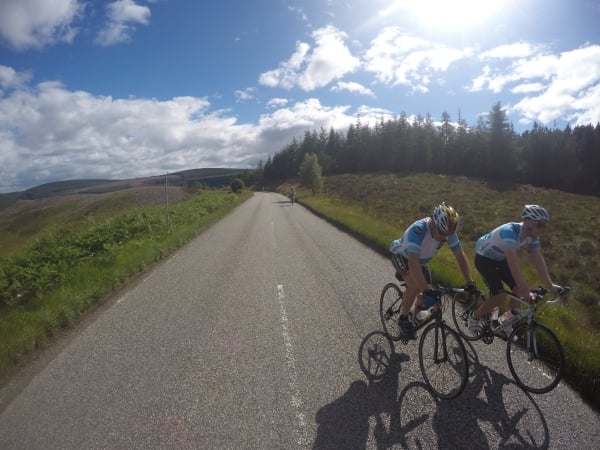
8. Get new, suitable tyres just before the trip. Anyone who has been on one of our trips knows how passionate we are about tyres because getting countless punctures is no fun at all. Our record for one day for a group of 15 riders was 15 punctures, this were the leader’s hands at the end of that day: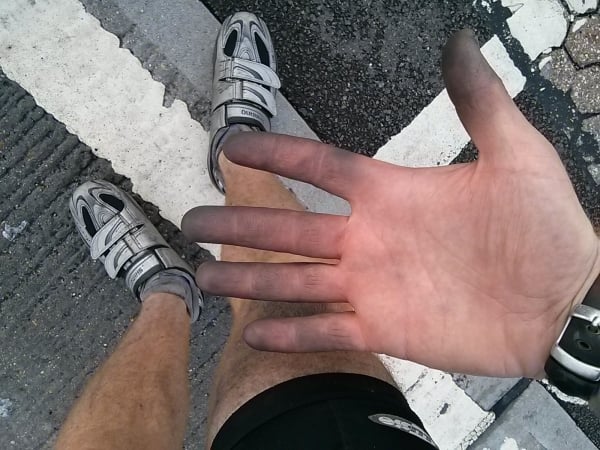 There is no doubt in our mind that this number of punctures could have been avoided had everyone bought new, suitable tyres just before the trips.
There is no doubt in our mind that this number of punctures could have been avoided had everyone bought new, suitable tyres just before the trips.
9. Be prepared to be midged. If you’ve never experienced midges before, you’re in for a real treat. Once contained within the borders of Scotland, this fearsome critter has migrated south and can now be found in most parts of the UK. There’s no doubt about it, Scotland still bears the brunt of the invasion, but being prepared for it with some insect repellent (we’ve found DEET or Avon Skin-So-Soft to be the most effective) and even the ability to cover more body parts than usual, is essential.
10. Pack a spare battery for phones and other electrical items. If you’re staying in hotels then this shouldn’t be too much of a problem as you’ll have plenty of sockets in which to charge your various electricals. If however you’re staying in hostels and/or campgrounds, then there may be a situation where all of the sockets are taken with other power-hungry visitors. Consider your phone not just as a means of Tweeting/Snapchatting your latest saddle sore to the world, it is an emergency piece of equipment that could save your life, so it is very important it is in working order whilst on the road. Could you also imagine your battery dying ten miles away from John O’Groats and losing that final Strava jigsaw piece – disaster!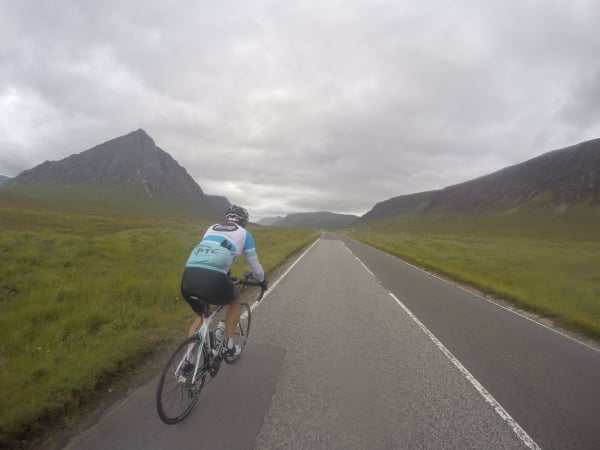
We hope you’ve gained some wisdom from the above points and whilst there are probably hundreds of LEJOG tips out there, we decided to whittle it down to these 10. The most important thing about Lands End to John O’Groats (or the other way round) is that you’re enjoying it. Some of the roads (if the route has been planned well) are some of the finest cycling routes in the country and the landscape is simply breathtaking. Ultimately though, you simply can’t prepare for every eventuality, but that’s exactly why it’s an adventure – there will be good days and there will be not so good days, and we wouldn’t have it any other way.
For more information on our Lands End to John O’Groats trips, please visit www.moreadventure.co.uk. Best of luck – you’ll get there!

